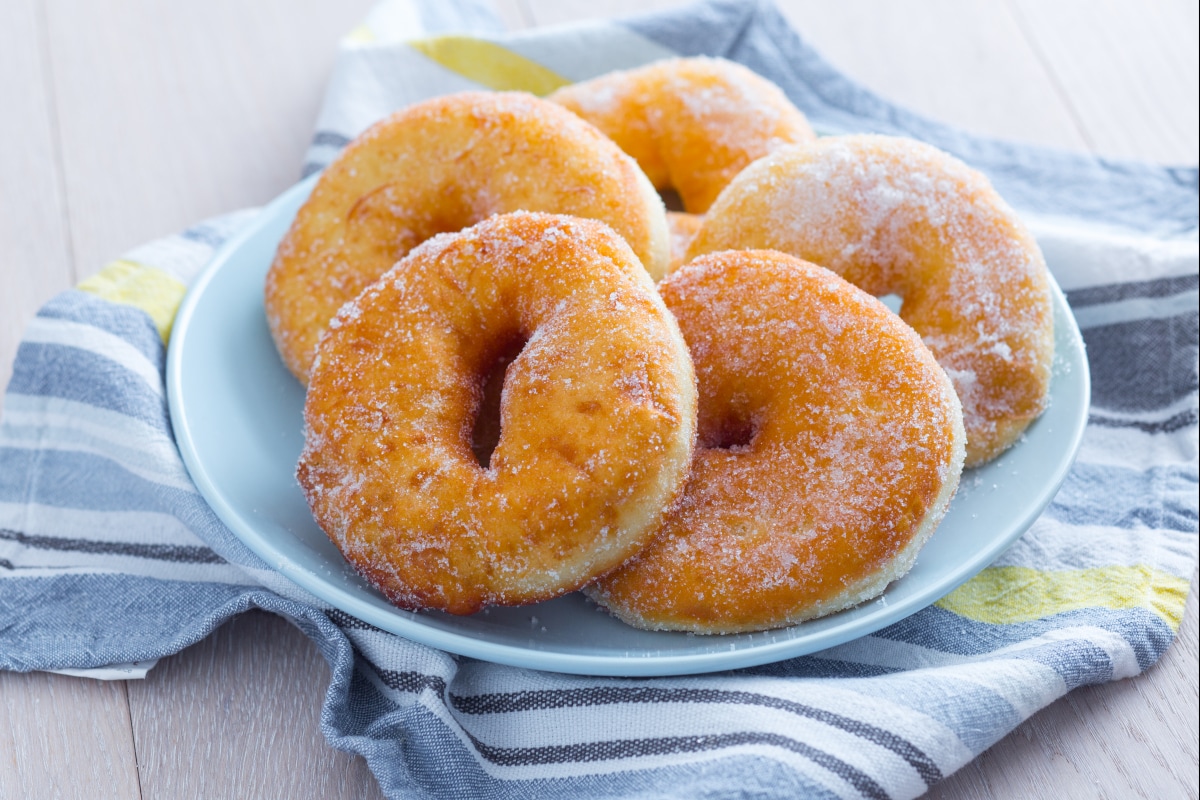Carnival Chiacchiere: fried, baked and filled
- Easy
- 1 h 45 min
- Kcal 419

Haven't you ever tasted graffe donuts? You have to indulge this sin of gluttony at least once! Graffe are sweet and soft fried donuts made with flour, boiled potatoes, eggs and butter that are prepared during Carnival. Just like for migliaccio, Naples is their home. As a matter of fact, they can be found all year round and they are eaten especially at coffee bars together with a good hot coffee. These delicious donuts are also widespread in other parts of Italy, such as Sicily, where they have other names depending on the area. To many people they evoke memories of their childhood when the graffe were prepared at home and devoured in the blink of an eye after being rolled in sugar. We invite you to replicate this goodness by preparing this very soft dough, whose secret lies in the dough rising several times. Dive into this sea of irresistible graffe donuts with us.
You might also like these donut recipes:

To prepare the graffe donuts, wash the potatoes, then boil them 1; it will take about 30 minutes depending on the size of the potatoes. Prepare the yeast in the meantime: in a bowl add the dehydrated brewer's yeast 2 to the sifted flour and mix it with the lukewarm milk 3 until a homogeneous mixture is obtained.

Cover the yeast with transparent wrap 4 and let it rise in the oven with the light on for 1 hour (otherwise cover it with a wool cloth and let it rise in a place away from drafts). When the potatoes are cooked, peel them, mash them with a potato masher 5 and let it all cool down. Place the two sifted flours and the honey in a stand mixer with flat beaters 6.

Add the sugar 7, the mashed potatoes, whichby now have cooled down 8 and the grated rind of a whole lemon, well washed and dried 9.

Beat the eggs slightly and add them 10, then turn on the mixer with the flat beater: when the dough is firm and collected on the beater, replace it with the dough hook and add the yeast 11. Continue working the mixture until the yeast is well incorporated, then add the salt and the softened butter one piece at a time, waiting for it to be absorbed before proceeding with the next 12.

Then put the dough on the work surface lightly greased with a little melted butter and work it with your hands to make it smooth 13. Make it into a ball 14 and place it in a bowl covered with transparent wrap 15, and let rise for 2 hours in the oven with the light on (or covered with a lid and left in a place away from drafts). The ideal temperature to make it rise is 79-82° F (26-30° C).

After this time, put the dough on the work surface, greased with the remaining melted butter, and make it cylindrical in shape 16, then divide it into portions of about 2 oz (60 g): shape each part into a ball 17, flatten it slightly and pierce it in the center 18,

then gently widen the hole: with our amounts you'll have 20 graffe. Place the donuts made this way on a drip pan lined with baking paper 19, cover with transparent wrap or a cloth and let rise in the oven off with the light on for 1 hour: they should double in volume. When leavening is complete, start heating the seed oil in a large saucepan, it should reach 325° F (160° C). Cut the baking paper under each graffe so as to make a support and not have to move them by hand and risk ruining their shape 20. When the oil has reached the indicated temperature, gently immerse them with the baking paperand then remove the paper 21. Fry them one at a time, a couple of minutes on each side to brown evenly.

When they are well browned on both sides, drain the graffe from the oil with a skimmer and let them dry on a tray lined with paper towels 22. Place the granulated sugar in a container that you must roll the doughnuts in still hot 23 to cover them completely with sugar: your graffe are ready 24, serve them hot!